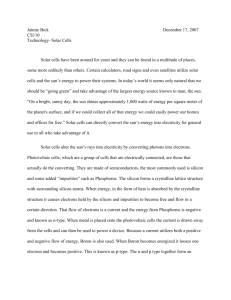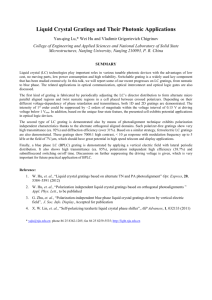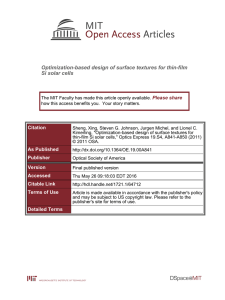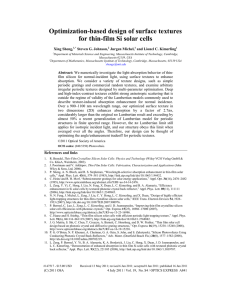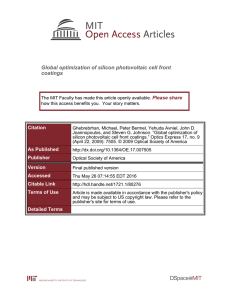wavelength peng
advertisement
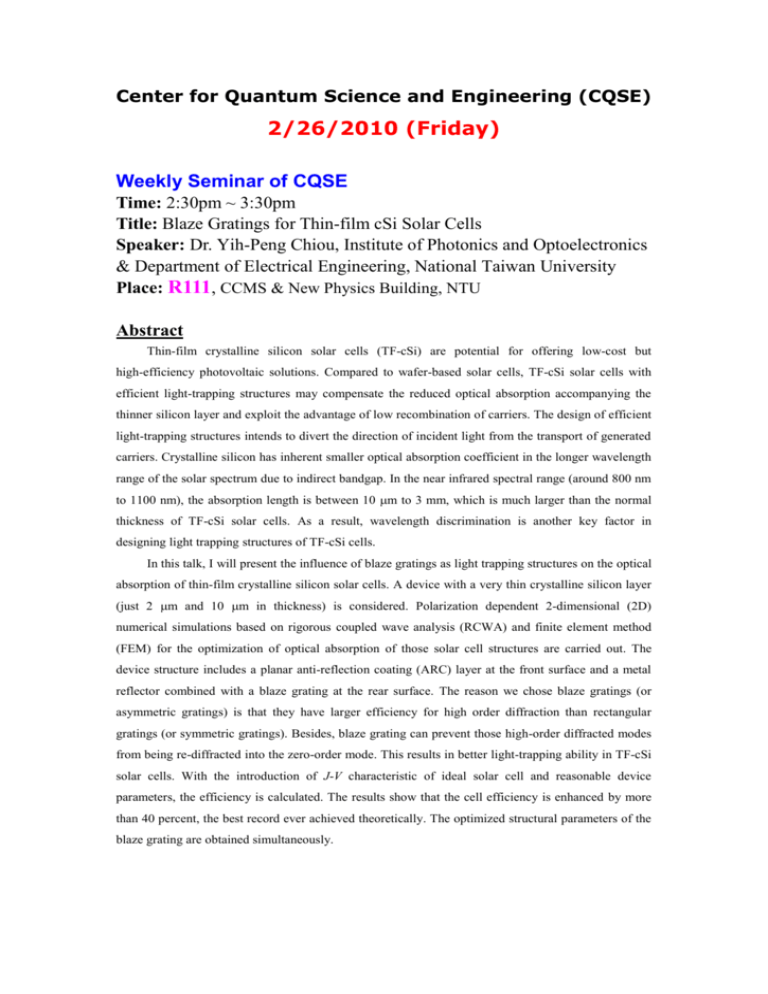
Center for Quantum Science and Engineering (CQSE) 2/26/2010 (Friday) Weekly Seminar of CQSE Time: 2:30pm ~ 3:30pm Title: Blaze Gratings for Thin-film cSi Solar Cells Speaker: Dr. Yih-Peng Chiou, Institute of Photonics and Optoelectronics & Department of Electrical Engineering, National Taiwan University Place: R111, CCMS & New Physics Building, NTU Abstract Thin-film crystalline silicon solar cells (TF-cSi) are potential for offering low-cost but high-efficiency photovoltaic solutions. Compared to wafer-based solar cells, TF-cSi solar cells with efficient light-trapping structures may compensate the reduced optical absorption accompanying the thinner silicon layer and exploit the advantage of low recombination of carriers. The design of efficient light-trapping structures intends to divert the direction of incident light from the transport of generated carriers. Crystalline silicon has inherent smaller optical absorption coefficient in the longer wavelength range of the solar spectrum due to indirect bandgap. In the near infrared spectral range (around 800 nm to 1100 nm), the absorption length is between 10 m to 3 mm, which is much larger than the normal thickness of TF-cSi solar cells. As a result, wavelength discrimination is another key factor in designing light trapping structures of TF-cSi cells. In this talk, I will present the influence of blaze gratings as light trapping structures on the optical absorption of thin-film crystalline silicon solar cells. A device with a very thin crystalline silicon layer (just 2 m and 10 m in thickness) is considered. Polarization dependent 2-dimensional (2D) numerical simulations based on rigorous coupled wave analysis (RCWA) and finite element method (FEM) for the optimization of optical absorption of those solar cell structures are carried out. The device structure includes a planar anti-reflection coating (ARC) layer at the front surface and a metal reflector combined with a blaze grating at the rear surface. The reason we chose blaze gratings (or asymmetric gratings) is that they have larger efficiency for high order diffraction than rectangular gratings (or symmetric gratings). Besides, blaze grating can prevent those high-order diffracted modes from being re-diffracted into the zero-order mode. This results in better light-trapping ability in TF-cSi solar cells. With the introduction of J-V characteristic of ideal solar cell and reasonable device parameters, the efficiency is calculated. The results show that the cell efficiency is enhanced by more than 40 percent, the best record ever achieved theoretically. The optimized structural parameters of the blaze grating are obtained simultaneously.


